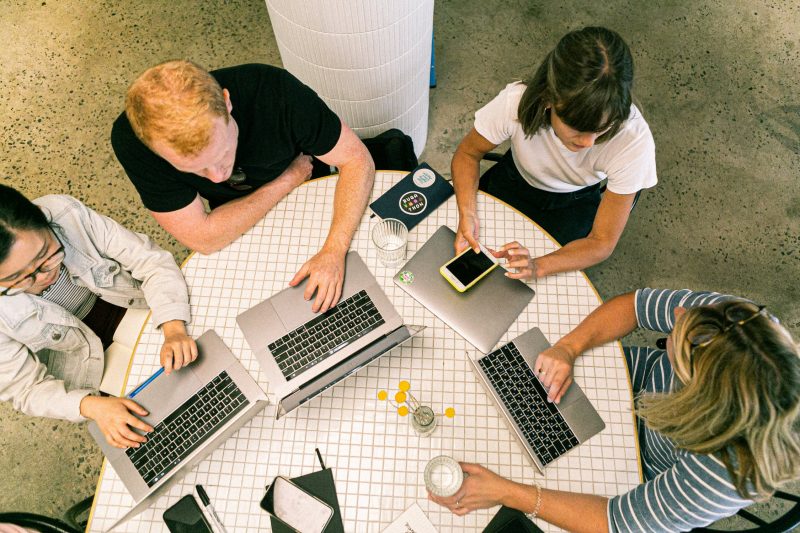Any successful company has team players who can think out of the box in order to solve problems creatively.
Organizations with a rigid corporate environment often are not conducive for the free ideas exchanging, while companies that allot their employees’ free time to pursuing creative projects have more chances to conduct effective brainstorming.
A brainstorming session is an integral part of most startups today. What are the specific nature and the essence of this event? Let’s start with the definition.
Contents
What is Brainstorming?
Looking for an appropriate brainstorming definition, you may find various interpretations; however, the basic value boils down to generating ideas to solve any collective problem. The method of brainstorming is a creative process that involves a freewheeling group discussion.
Brainstorming usually involves a group of effective team players and a facilitator. Ideally, every meeting participant thinks aloud and suggest as many ideas and suggestions as possible.
Group discussion, analysis, or any criticism of the potential ideas are allowed only when the brainstorming meeting is over, and the evaluation session begins.

What is the purpose of brainstorming?
The main idea and the real power of any well-run brainstorming session is that participants combine their ideas in a free-thinking environment, broadening the solution space.
Before running a brainstorming session, it is worth sending an e-mail to all involved employees letting them know the issues to be addressed and giving them time to bring a unique idea to the table.
The ideal brainstorming should combine a relaxed and informal approach to problem-solving and encourage people to express their ideas that may, at first, seem a bit quirky. Often these crazy ideas can be turned into creative and powerful solutions.
Why do you need brainstorming?
It’s crucial to start solving problems with a structured analytical process; otherwise, people can generate limited and unimaginative ideas. As brainstorming provides a free informal environment, it encourages all team members to actively participate.
Aimed to solve problems, brainstorming sessions bring the diverse experience of team members into play. They let the group increase the richness of explored ideas and find solutions in a positive and rewarding way. Brainstorming also helps team members to be more committed to an approach as if they were involved in developing it.
Types of Brainstorming
Individual Brainstorming
You may think that group discussion is more effective at generating ideas, however, there is an opinion that individual brainstorming produces even more.
The individual brainstorming session may be most effective if you have a simple problem, and need to create a list of ideas or focus on a broad issue. The group one is often more efficient in solving complex problems.
Brainstorming alone, you don’t need o to worry about other people’s opinions, and you can be more creative. The only disadvantage of this approach is that you may not produce ideas as fully as you do not have the wider experience of other group members.

Group Brainstorming
Brainstorming that involves different people allows taking advantage of their experience and group creativity. Group creativity can save and take an idea to the next stage in case one member gets stuck with it.
Collective discussion helps individuals feel that they have contributed to the solution. It reminds them that others have creative ideas to offer.
However, try to avoid big group gatherings; groups of 5-7 people are usually the most effective ones.
Basic tips for a brainstorming facilitator
The success of a brainstorming session normally depends on how well the facilitator observes the following eight rules:
- Start with a target problem. Team members should totally understand the defined question and stay on topic.
- Limit time based on the complexity of each issue (15 to 45 mins are usually enough).
- Avoid judgment and criticism. No one in the team should be negative about any idea.
- Encourage weird ideas and make everyone feel free to communicate their ideas, as long as they stick to the topic.
- Think about the quantity and remember that it breeds quality. The sifting-and-sorting process comes later.
- Develop others’ ideas. Every participant may expand on others’ notions and reach new insights.
- Show respect for everyone’s ideas and allow one conversation at a time.
- Visualize your ideas with helpful charts and diagrams to help others see things in different ways.
Choose a brainstorming activity over other techniques
There are many goal-achieving and problem-solving strategies besides brainstorming sessions, for example, Abstraction, Analogy, Hypothesis testing, Lateral thinking, Method of focal objects, Reduction, Root cause analysis, etc.
Compared to these and other methods, brainstorming contains the most appropriate and convenient phases, such as the presentation and definition of a central goal, generating ideas, discussion, and final evaluation. It allows teams to create a relaxed atmosphere that stimulates everyone’s participation.
When you brainstorm by yourself or in a group, you can find practical solutions to the issues you encounter.





